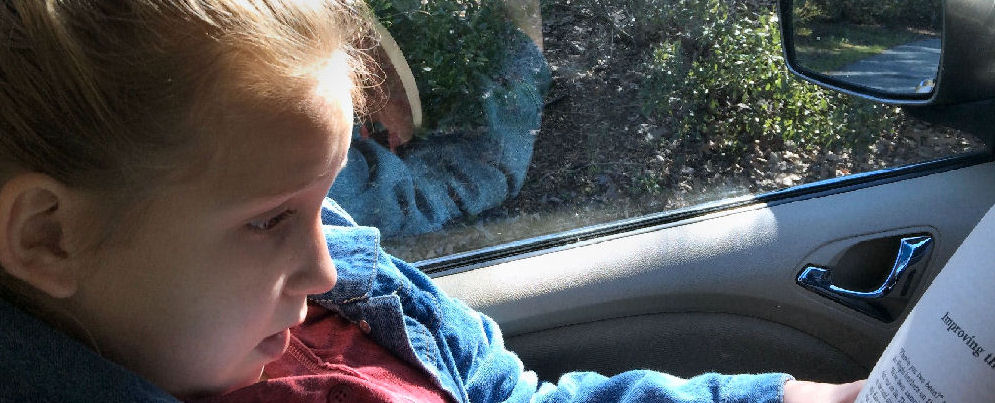Over the last sixteen years I have taught my kids using a set curriculum and also curriculum I developed. I am a planner by nature, so I order from the library or purchase supplements to our main curriculum well in advance, making notes even in the summer. Sometimes, however, questions come up that I cannot answer or cannot find the answers for in my resources.
For instance, while studying about the Bonus Army that protested in Washington, D.C., after WWI, my daughter asked, “What is a tank?” When I showed her a tank moving over land and buildings and its size in comparison with a human being, she realized the implications of how it may have felt when President Herbert Hoover ordered the army to clear the veterans’ campsite—even though it was only a glimpse through my cell phone.
I am among those who struggle with teens having iPads and iPhones. I know the problems, the disadvantages and understand the justifiable and scary implications that come with kids and electronics. I have found, however, that as educators, we can use this technology to enhance our kids’ educations and ultimately learn right along with them. We often do not hear about these benefits. For us, the smart phone has engaged, broadened and complemented our learning, as it allows us to homeschool on our comfy sofa or in the car! Technology makes the words come alive and jump off the page, as it affects the senses.
The three benefits that I appreciate are:
1 – Convenience
First, the iPhone or iPad is convenient. If I had to go upstairs to my computer to show my girls something we are learning about, I probably would not do it. I would either forget; the sticky note would get lost in the shuffle or the moment would be lost. Google takes just seconds.
2 – Creating memories
We often laugh together at videos we are watching or are totally amazed at just how big anacondas grow. Sometimes we have sat in awe at being able to visualize what we are reading. Seeing pictures of WWI, the Great Depression or hearing the songs or personal testimonies of an era connects us to it. On more than one occasion, my kids said, “Remember when we learned about ____?”
3 – Internalizing learning
Seeing the animal that we are studying or hearing its sounds, helps to lock the memory in our consciousness. My girls remember that story, better understand the period or connect with the sadness of war, by seeing and hearing at just the right time. Understanding is cemented when it is attached to a feeling, aroused by use of technology.
Let me give you some examples.
When we were studying Helen Keller, I googled YouTube videos to see and hear her speak. We read that one of her goals was to learn to speak, even though she was deaf and blind. Can you imagine? Who knew such rare video footage of Helen Keller and Anne Sullivan existed? I was also able to put the movie The Miracle Worker on hold at our local library directly from my smart phone as soon as I had the inspiration. This may not have happened if I had to rely on my memory to do it when we got home.
At the beginning of the year, we learned about the Tasmanian Devil, a marsupial now found only in Tasmania. For moms and dads out there, remember “Taz” with his friend Bugs Bunny? We read about their blood-curdling screams and were able to hear them for ourselves as we watched several videos. Other fascinating videos and sound recordings that enhanced our learning about animals included whale sounds, moving sidewinders and the largest snakes in the world.
Have you ever wondered when reading the Bible what the Jordan River looks like or maybe been curious about the size of Noah’s Ark? A smart-phone or tablet can answer these questions on the spot.
We read Hero Over Here (by Kathleen V. Kudlinski) about a young boy during WWI whose family survived the flu epidemic. Teddy, the ten-year-old main character, talks about his brother going off to war singing Over There. I googled it so we could hear it, and we hummed it all day long! It made the book and the time come alive!
During this same lesson, we read about Franklin Delano Roosevelt’s first inaugural address. It makes you pause when you hear President Roosevelt say to our nation, “The only thing we have to fear is fear itself,” especially in the context of the sadness, poverty and fear going on in our country at that time (1933).
When we studied the Civil War and read about the rebel yell the Confederate soldiers used when they attacked the Union troops, I googled to see if we could hear it. It is not the “Yee-haw” you might think. It is a cause to pause. Its sound is chilling, unearthly and animal like. It gave us chills as we imagined these fellows coming over a hill to battle. What rare footage we found of Civil War soldiers giving the rebel yell! We found other examples of Confederate rebel yells including a video showing that there is an art to the yell, that it has cadence and how they teach the rebel yell to historical Civil War re-enactors. Fascinating!
When we studied Redwood trees in California, it was hard to explain and describe the size of these trees. The one picture in our science book did not do them justice. You have to see better images to truly understand just how huge these giant Sequoias and Redwoods grow. It took less than a minute to find images online on that comfy couch.
We are currently studying the Great Depression. During our history study, we learned about the song, Brother, Can You Spare a Dime? Listening to the song alone is not nearly as meaningful when you do not have the background of the Stock Market Crash of 1929, information about the railroads, soup kitchens, the skyscrapers that were being built and Roosevelt’s New Deal. However, our American history art study was complemented in a unique way as my girls had just sketched a skyscraper, a house out west by a railroad and also seen important paintings and photographs of the time.
We intuitively know that we need to guard ourselves and our kids against the pitfalls of computers. We also know that you cannot believe everything you see online. However, we need to see the benefits of this type of learning with our kids in our homeschools. Not even the sky is the limit. Embrace the technology!




